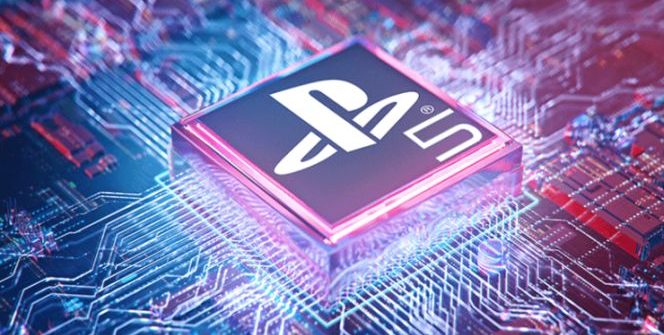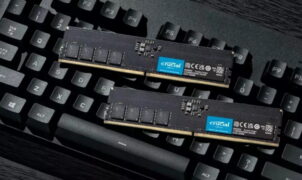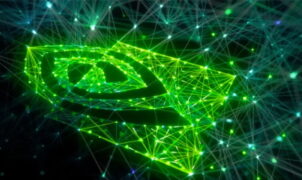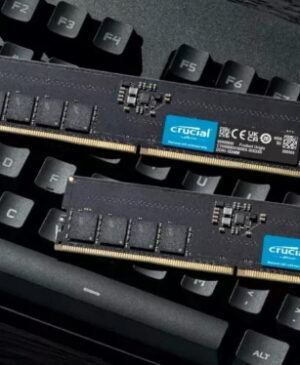PlayStation 5 – After Microsoft, Sony has also held its detailed technical reveal of its next-gen console.
The speech was held by Mark Cerny, the lead architect of the PlayStation 4, the PlayStation Vita, and the PlayStation 5. You can watch it below but be warned: you can fall asleep by listening to it and don’t expect any game demos or announcement here. It’s mostly talking about the new SSD, and the speech was meant to be held at this year’s GDC (Game Developers Conference).
Let’s see the specs. The brackets are for the PlayStation 4:
- CPU: 8-core AMD Ryzen Zen 2, 3.5 GHz with variable frequency (8-core AMD Jaguar, 1.6 GHz)
- GPU: custom AMD RDNA 2 Navi, 10,28 TFLOPS, 36 CUs at 2.23 GHz with varied frequency (custom AMD GCN, 1,84 TFLOPS, 18 CUs at 800 MHz)
- RAM: 16 GB GDDR6, 256-bit, 448 GB/s bandwidth (8 GB GDDR5, 256-bit, 176 GB/s)
- Internal storage: custom 825 GB SSD (500 GB HDD)
- I/O throughput: 5,5 GB/s raw, typically 8-9 GB/s compressed (50-100 MB/s depending on the data location on the HDD).
- Expandable storage: NVME SSD slot (replaceable internal HDD)
- External storage: USB HDDs are supported for both generations
- Optical disc drive: 4K UHD Blu-ray (Blu-ray)
These are somewhat behind the Xbox Series X (fewer TFLOPS, variable frequency).
„The PlayStation 5’s ultra-high-speed SSD and integrated custom I/O system were developed to remove barriers to play – specifically loading screens. Developers can stream assets into PlayStation 5 games at an incredibly fast rate, so PlayStation 5 play experiences can be seamless and dynamic, with near-instantaneous fast travel through large game worlds. This enhanced speed will enable game developers to create larger, richer worlds without traditional limitations, such as load times, and also allows gamers to spend more time gaming than waiting.
We also wanted to introduce new capabilities with PlayStation 5’s custom GPU. Additional GPU power will allow for higher resolution in games, but a major new feature that benefits the visuals of games even further is ray tracing. Ray tracing simulates the way light moves in real life, and how it bounces off various surfaces. Games that take advantage of this feature will render objects much more accurately, and with heightened realism. Water, glass, light refraction, a character’s hair and so on, will look even more realistic.
PlayStation 5 will also allow games to offer a much deeper sense of immersion through 3D audio. Visuals are of course imperative to the gaming experience, but we believe audio plays a crucial role as well. We wanted to deliver a compelling audio experience for all users, not just those who own high-end speaker systems. So we designed and built a custom engine for 3D audio that is equipped with the power and efficiency for ideal audio rendering. With 3D audio on PlayStation 5, the sounds you hear while playing will offer a greater sense of presence and locality. You’ll be able to hear raindrops hitting different surfaces all around you, and you can hear and precisely locate where an enemy is lurking behind you.
Lastly, we’re excited to confirm that the backwards compatibility features are working well. We recently took a look at the top 100 PS4 titles as ranked by playtime, and we’re expecting almost all of them to be playable at launch on PlayStation 5. With more than 4,000 games published on PS4, we will continue the testing process and expand backwards compatibility coverage over time,” the PlayStation Blog reads.
The backwards compatibility is using the boost feature, and yes, unfortunately, only PlayStation 4 games will be supported at launch, and even then, not all of them will be playable on day 1. Cerny says the games have to be tested to be compatible (and we might have written about this before). There is no excuse to not support PS1 and PS2 title, while PS3, we understand due to the complexity of that platform.
To run PlayStation 4 games, you can also hook up an external HDD, and the SSD expansion slot requires such an M2 SSD that Sony Interactive Entertainment has confirmed to be up to size, spec and speed. However, these will come after the console arrives. The audio chip is called the Tempest Engine.
DigitalFoundry‘s post was further extended by John Linneman, one of the editors of the site. „The craziest thing about the PlayStation 5 is the speed of the SSD. 5.5 GB/s is just part of the story – there is a lot of custom silicon in there to ensure that the system isn’t bottlenecked in other areas. It’s fast on paper – a lot faster than Xbox Series X even, Only first-party games will truly utilize those speeds but multiplatform games are still going to be made with SSD in mind. I mean, we went from 50-100MB/s last-gen to 2.4 GB/s (Xbox Series X) and 5.5 GB/s (PlayStation 5). That’s a MASSIVE leap. The PlayStation 5 is predictable but it forces developers to make choices that won’t be necessary on the Xbox Series X. I think fixed clocks are a better choice in this case BUT we’ll see how it goes,” he wrote via several tweets.
The PlayStation 5 will be at an advantage with the expandable storage – you can use the M2 SSDs, while the Xbox Series X will have proprietary expansion cards. Also, the PS5’s SSD will have six priority levels. This is important: currently available PCIe 4.0 drives only have two. So this expansion won’t be available at launch.
The PlayStation 5 is going to come this holiday season, Sony Interactive Entertainment Benelux’s PR agency, BAAS Amsterdam claims. The Netherlands will also have an attraction to showcase how much of a generational leap we’re getting.
Source: Gematsu, WCCFTech, DualShockers, PSL
Please support our page theGeek.games on Patreon, so we can continue to write you the latest gaming, movie and tech news and reviews as an independent magazine.
Become a Patron!









![[TGA 2025] Tomb Raider: Legacy of Atlantis: Another Remake of the First Game! [VIDEO]](https://thegeek.games/wp-content/uploads/2025/12/theGeek-Tomb-Raider-Catalyst-Legacy-of-Atlantis-Remake-Crystal-Dynamics-302x180.jpg)





Leave a Reply